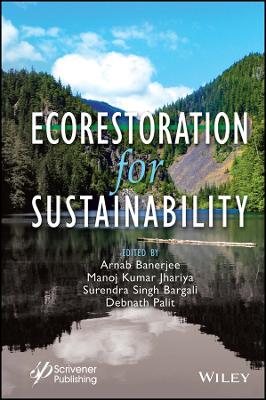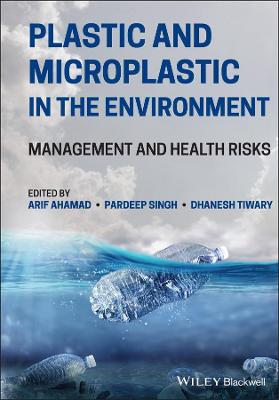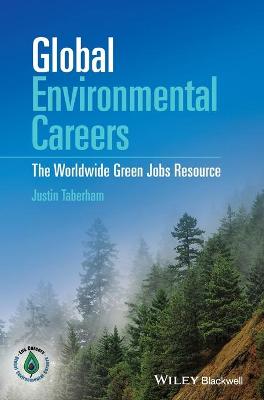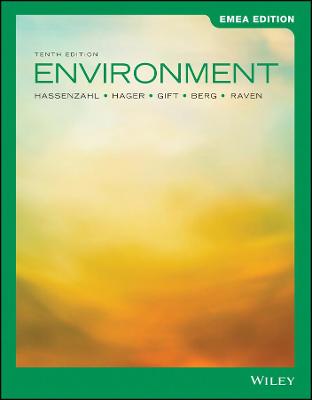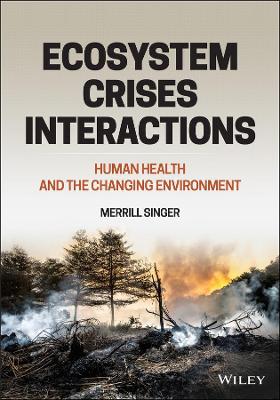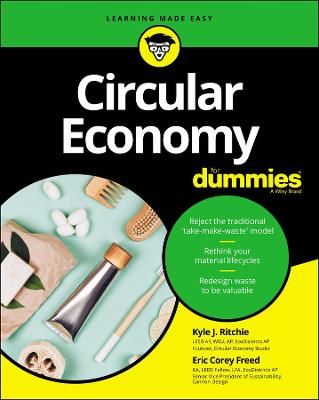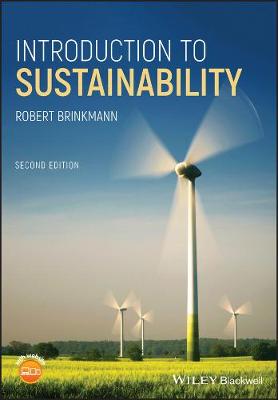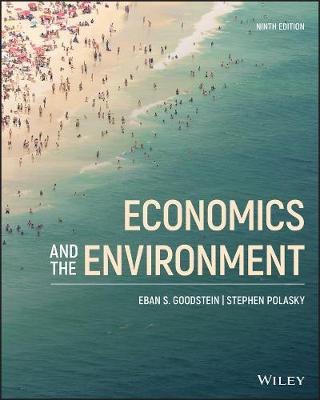Introduction to Waste Management
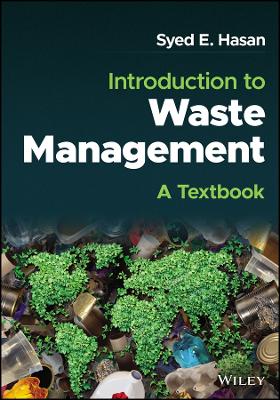 -15%
portes grátis
-15%
portes grátis
Introduction to Waste Management
A Textbook
Hasan, Syed E.
John Wiley & Sons Inc
09/2022
464
Mole
Inglês
9781119433934
15 a 20 dias
988
Preface xix
Acknowledgments xxii
1 Introduction 1
1.1 The Beginning 1
1.1.1 Historical Perspectives 2
1.2 Importance of Waste Management in Sustainability, Ecological Health, and Climate Change 4
1.2.1 Waste Management and Environmental Sustainability 6
1.2.2 Waste Management and Human and Ecological Health 8
1.2.3 Waste Management and Climate Change 9
1.3 Overview of Waste Generation in the United States and Other Countries 10
1.4 Future Perspectives on Waste Management 12
1.5 Summary 13
Study Questions 14
References 15
Supplementary Readings 15
Web Resources 15
Acronyms/Symbols 16
2 Essentials of Geology, Geotechnics, and Toxicology 17
2.1 Introduction 17
2.2 Basic Concepts 18
2.3 Geologic Cycles 27
2.3.1 Rock Cycle 27
2.3.2 Water (Hydrologic) Cycle 29
2.3.3 Tectonic Cycle 30
2.3.3.1 Significance of Plate Movement 33
2.3.4 Geochemical Cycle 33
2.3.5 Climate Cycle 33
2.4 Earth Materials 33
2.4.1 Rocks as Earth Materials 34
2.4.1.1 Igneous Rocks 34
2.4.1.2 Sedimentary Rocks 34
2.4.1.3 Metamorphic Rocks 34
2.4.1.4 Engineering Properties and Behavior of Rock Materials 34
2.4.2 Soils as Earth Material 35
2.4.3 Soil Formation 36
2.4.3.1 Soil Profile 37
2.4.3.2 Soil Texture 37
2.5 Index Properties of Soils 38
2.5.1 Void Ratio, Porosity, and Degree of Saturation 39
2.5.2 Density 40
2.5.3 Moisture (Water) Content 40
2.5.4 Grain- Size Distribution 41
2.5.5 Atterberg Limits 41
2.5.6 Permeability 44
2.6 Soil Classification Systems 45
2.6.1 Soil Classification 45
2.7 Hydrogeology 47
2.7.1 Groundwater Occurrence 48
2.7.2 Types of Aquifers 49
2.7.3 Groundwater Movement 50
Essentials of Toxicology 52
2.8 Introduction 52
2.8.1 Toxicity and Toxicity Rating 53
2.8.2 Types of Toxic Effects 53
2.9 Dose-Response Relationship 55
2.9.1 Hypersensitivity and Hyposensitivity 57
2.10 Exposure Paths of Toxicants to Humans 58
2.10.1 Ingestion 58
2.10.2 Inhalation 58
2.10.3 Dermal Contact 58
2.10.4 Injection 58
2.11 Teratogenesis, Mutagenesis, and Carcinogenesis 58
2.11.1 Teratogenesis 58
2.11.2 Mutagenesis 59
2.11.3 Carcinogenesis 59
2.12 Assessment of Health Risks of Hazardous Waste 59
2.13 Summary 60
Study Questions 60
References 62
Supplemental Readings 63
Web Resources 63
Acronyms/Symbols 63
3 Environmental Laws 64
3.1 History and Evolution of Environmental Laws in the United States 64
3.1.1 Foundation and Strength of US Environmental Laws 66
3.2 Important Environmental Laws 66
3.2.1 The Rivers and Harbors Act 69
3.2.2 The Atomic Energy Act 70
3.2.3 Solid Waste Disposal Act 70
3.2.4 Resource Recovery Act 70
3.2.5 National Environmental Policy Act 70
3.2.6 Occupational Safety and Health Act 70
3.2.7 Federal Water Pollution Control (Renamed Clean Water) Act 71
3.2.8 Clean Air Act 71
3.2.9 Marine Protection, Research, and Sanctuary Act 73
3.2.10 Federal Insecticide, Fungicide, and Rodenticide Act 73
3.2.11 Safe Drinking Water Act 73
3.2.12 Resource Conservation and Recovery Act 80
3.2.13 Surface Mining Control and Reclamation Act 80
3.2.14 Uranium Mill Tailings and Radiation Control Act 81
3.2.15 Comprehensive Environmental Response, Compensation, and Liability Act 81
3.2.16 Superfund Amendments and Reauthorization Act 81
3.2.17 Hazardous and Solid Waste Amendments Act 83
3.2.18 Underground Storage Tanks Act 83
3.2.19 Toxic Substance Control Act 83
3.2.20 Low- Level Radioactive Waste Policy Act 84
3.2.21 Nuclear Waste Policy Act 84
3.2.22 Emergency Planning and Community Right- to- Know Act 84
3.2.23 Medical Waste Tracking Act 86
3.2.24 Indoor Radon Abatement Act 86
3.2.25 Pollution Prevention Act 86
3.3 Summary 86
Study Questions 87
References 88
Web Resources 88
Acronyms/Symbols 88
4 Municipal Solid Waste 89
4.1 Historical Perspective 89
4.1.1 The United States Public Health Service and the American Public Works Association 90
4.2 Introduction 91
4.2.1 Environmental and Health Impacts from Mismanagement of Municipal Solid Waste 93
4.3 US Laws Regulating Solid Waste Management 102
4.3.1 The Solid Waste Disposal Act 102
4.3.2 The Resource Conservation and Recovery Act 102
4.4 Source, Composition, and Quantity of MSW 103
4.4.1 MSW Composition 103
4.4.1.1 Special Wastes 106
4.4.2 Quantity of MSW 106
4.5 Collection and Disposal of MSW 107
4.5.1 MSW Disposal 107
4.5.2 Land Disposal 109
4.5.3 Incineration and Waste- to- Energy Conversion 110
4.5.4 Composting 112
4.6 Physical and Chemical Properties of MSW 112
4.6.1 Moisture Content 113
4.6.2 Density 114
4.6.3 Volume Reduction 114
4.6.4 Compaction Ratio 115
4.6.5 Permeability 115
4.6.6 Energy (Heat) Content 115
4.6.7 Field Capacity 116
4.6.8 Particle Size Distribution 116
4.7 Landfill 118
4.7.1 Types of Landfills 119
4.7.2 Daily Operation of a Sanitary Landfill 120
4.7.3 Landfill Leachate 121
4.7.4 Landfill Gases 123
4.7.4.1 Landfill Gas Formation 123
4.7.5 Landfill Design 125
4.7.5.1 Landfill Siting Restrictions 126
4.7.6 Landfill Design Criteria 127
4.7.6.1 Leachate Collection and Removal System 129
4.7.6.2 Landfill Gas Collection and Extraction System 130
4.7.7 Landfill Area Requirement 131
4.7.8 Landfill Site Selection 132
4.7.8.1 Defining Purpose and Scope 132
4.7.8.2 Office Study and Data Collection 132
4.7.8.3 Field Investigations 133
4.8 Bioreactor Landfill 134
4.9 Waste Audit 136
4.9.1 Waste Audit Methodology 136
4.10 Summary 138
Study Questions 138
References 140
Supplemental Reading 142
Web Resources 143
Acronyms/Symbols 143
5 Hazardous Waste 145
5.1 Introduction 145
5.1.1 Hazardous Substance and Hazardous Waste 146
5.1.2 Environmental and Health Problems 146
5.2 US Laws Regulating Hazardous Waste 155
5.2.1 Resource Conservation and Recovery Act 155
5.2.2 Toxic Substances Control Act 156
5.2.3 Comprehensive Environmental Response, Compensation, and Liability Act 156
5.2.4 Hazardous and Solid Waste Amendments 157
5.2.5 Underground Storage Tanks Act 157
5.2.6 Superfund Amendments and Reauthorization Act 158
5.2.7 Emergency Planning and Community- Right- to- Know Act 158
5.2.8 Frank R. Lautenberg Chemical Safety for the 21st Century Act (Lautenberg Chemical Safety Act) 159
5.3 Definition and Classification of Hazardous Waste 159
5.3.1 The United States Environmental Protection Agency Criteria 159
5.3.1.1 Listed Waste 160
5.3.1.2 Characteristic Waste 161
5.3.2 EU's Classification of Hazardous Waste 165
5.4 Sources and Generators of Hazardous Waste 166
5.4.1 Categories of Hazardous Waste Generators 169
5.5 Storage and Transportation of Hazardous Waste 170
5.5.1 Hazardous Waste Storage 171
5.5.2 Hazardous Waste Transportation 171
5.6 Treatment of Hazardous Waste 172
5.6.1 Hazardous Waste Treatment Methods 173
5.6.1.1 Neutralization 173
5.6.1.2 Sorption 173
5.6.1.3 Precipitation 174
5.6.1.4 Reverse Osmosis 174
5.6.1.5 Stripping 175
5.7 Hazardous Waste Treatment and Disposal 175
5.7.1 Land Disposal 176
5.7.1.1 Regulatory Aspects of Land Disposal 176
5.7.2 Land Disposal Restrictions 176
5.7.2.1 Key Provisions of the LDR Program 177
5.7.2.2 Land Treatment/Disposal 177
5.7.3 Secure Landfill 178
5.7.3.1 Waste Piles 178
5.7.3.2 Surface Impoundments 180
5.7.3.3 Mine Storage/Disposal 181
5.7.3.4 Deep Well Injection 181
5.7.4 Thermal Treatment Methods 182
5.7.4.1 Incineration 182
5.7.4.2 Pyrolysis 183
5.7.4.3 Other Thermal Destruction Methods 183
5.7.5 Biological Methods 184
5.7.6 Miscellaneous Disposal Methods 184
5.7.6.1 Permeable Reactive Barriers 184
5.7.6.2 Vitrification 186
5.7.6.3 Wetlands 186
5.7.6.4 Combination Methods 187
5.7.7 Sustainable (Green) Remediation 190
5.7.7.1 Triad Approach 190
5.8 Superfund Program and Cleanup of Hazardous Waste Sites in the United States 191
5.8.1 Remedial Actions under RCRA and CERCLA 192
5.9 Summary 193
Study Questions 194
References 195
Supplementary Reading 196
Web Resources 196
Acronyms/Symbols 197
6 Medical Waste 198
6.1 Introduction and Historical Context 198
6.1.1 Definition 200
6.2 Nature, Source, and Quantity of Medical Waste 202
6.2.1 Nature of Medical Waste 202
6.2.2 Sources of Medical Waste 204
6.2.3 Wastes from Major Health Care Establishments 206
6.2.4 Quantity of Medical Waste 207
6.3 Hazards Associated with Regulated Medical Waste 210
6.4 Treatment and Disposal of Medical Waste 216
6.4.1 Methods of Treatment and Disposal of Regulated Medical Waste 217
6.4.1.1 Thermal Treatment 217
6.4.1.2 Biological Treatment 220
6.4.1.3 Chemical Treatment 220
6.4.1.4 Radiation- based Treatment 221
6.5 The COVID- 19 Pandemic and Its Impact on Waste Management 221
6.5.1 The Great Pandemic of 2020 and Medical Waste 222
6.5.2 COVID- 19 Waste 225
6.5.2.1 Determination of the Quantity of COVID- 19 Waste 225
6.5.3 Reducing COVID- 19 Waste Quantity 227
6.5.4 Waste Management Industry's Response to COVID- 19 228
6.6 Summary 228
Study Questions 229
References 230
Supplementary Reading 232
Web Resources 232
Acronyms/Symbols 233
7 Nuclear Waste 234
7.1 Introduction 234
7.1.1 Nuclear Waste 235
7.1.2 Types of Nuclear Waste 235
7.1.3 High- Level Wastes: SNF and HLW 235
7.1.4 Nuclear Waste Management 237
7.1.5 Early Years of Nuclear Waste Management in the USA 237
7.2 Basics of Nuclear Science 238
7.2.1 Radioactive Elements 238
7.2.2 Radioactive Minerals 239
7.2.3 Nuclear Fission and Electric Power Generation 239
7.2.4 Energy Potential of Radioactive Elements and Use of Nuclear Energy 240
7.2.4.1 Nuclear Energy for Electric Power Generation 242
7.2.4.2 Other Uses of Nuclear Energy 245
7.3 Radioactivity, Natural and Induced Radiation, and Half- Life 246
7.3.1 Radioactivity 246
7.3.2 Radiotoxicity 247
7.3.3 Radiation Exposure and Acceptable Radiation Dose 248
7.3.4 Induced Radioactivity 249
7.3.5 Naturally Occurring Radioactive Materials and Technologically Enhanced Radioactive Materials 250
7.3.6 Radioactive Decay and Half- life 251
7.4 Nuclear Waste 252
7.4.1 Sources of Nuclear Waste 253
7.4.2 Nuclear (Uranium) Fuel Cycle 254
7.4.2.1 Spent Fuel Reprocessing 256
7.4.3 Waste Forms and Packaging 256
7.4.4 Nuclear Waste Management 257
7.4.5 Nuclear Waste Classification 258
7.4.5.1 The IAEA System 259
7.4.5.2 The US System 259
7.5 Laws Regulating Management of Nuclear Waste 262
7.5.1 EU's Nuclear Waste Management Law 262
7.5.2 The United States Nuclear Waste Management Laws 262
7.5.2.1 Low- Level Radioactive Waste 263
7.5.2.2 High- Level Nuclear Waste 263
7.6 Nuclear Waste Storage and Transportation 266
7.6.1 Transportation of Nuclear Waste 266
7.6.2 LLW Transportation 266
7.6.3 TU/ILW Transportation 266
7.6.4 HLW/SNF Transportation 267
7.7 Nuclear Waste Disposal 267
7.7.1 Low- Level Radioactive Waste Disposal 268
7.7.2 Transuranic Waste Disposal 268
7.7.3 High- Level Nuclear Waste Disposal 269
7.7.4 HLW Management in the United States 272
7.7.4.1 The Lyons Salt Mine Project 275
7.7.4.2 Other US Repository Sites 276
7.7.4.3 Politics of the Yucca Mountain Project 276
7.8 Global Status of HLW Disposal 277
7.8.1 Quantity of HLW 277
7.8.2 United States 277
7.8.3 Finland HLW Repository 281
7.8.4 Sweden 283
7.8.5 France 285
7.8.6 HLW Management in Other Countries 285
7.8.6.1 Shared Repository Concept 285
7.9 Nuclear Waste From Reactor Decommissioning 287
7.10 Summary 288
Study Questions 290
References 290
Supplemental Reading 294
Web Resources 294
Acronyms/Symbols 295
Unit Conversions 295
8 Electronic Waste 296
8.1 Introduction 296
8.1.1 Metals in e- Waste 297
8.1.2 Definition of Electronic Waste 298
8.1.2.1 The United States 299
8.1.2.2 European Union 299
8.1.2.3 United Nations 299
8.2 Laws Regulating Electronic Waste 302
8.2.1 The United States 302
8.2.2 The United Nations 302
8.2.3 The EU 304
8.3 Nature and Composition of Electronic Waste 304
8.3.1 Planned Obsolescence 305
8.3.2 Material Composition of e- Waste 306
8.3.3 Material Composition of Desktop Computers 308
8.3.4 Material Composition of Laptops 309
8.3.5 Material Composition of Tablets 311
8.3.6 Material Composition of Mobile Phones 311
8.4 E- Waste Quantity 312
8.4.1 Estimation of e- Waste Quantity 314
8.5 E- Waste Recycling and Recovery of Valuable Metals 316
8.5.1 Metal Recovery from E- Waste 317
8.5.2 Benefits and Challenges of e- Waste Recycling 318
8.6 Health and Environmental Impacts 319
8.6.1 Informal E- Waste Recycling 319
8.6.2 Health and Environmental Impacts of Informal Recycling 321
8.7 Sustainable Management of E- Waste 324
8.7.1 United Nations Sustainable Development Goals and E- Waste 324
8.7.2 Other Measures for Sustainable E- Waste Management 326
8.8 Summary 326
Study Questions 327
References 328
Supplementary Readings 331
Web Resources 331
Acronyms/Symbols 331
9 Waste Minimization 332
9.1 Introduction 332
9.2 Definitions 333
9.3 Approaches to Waste Minimization 334
9.4 Recycling 339
9.4.1 Plastic Recycling 342
9.5 Innovative Waste Minimization Technologies 344
9.5.1 Innovation in Plastic Packaging 344
9.5.2 Microfactories 345
9.5.3 Repurposing 346
9.5.4 NGOs' Efforts 346
9.6 Waste Exchange 348
9.7 Zero Waste 349
9.7.1 Evolution and Implementation of the Zero Waste Concept 349
9.7.2 Tool for Measuring ZW Success 350
9.8 Ship Recycling 351
9.8.1 Methods of Ship Recycling 351
9.8.2 Ship Recycling - A Hazardous Occupation 352
9.8.3 Modern Ship Recycling Industry 354
9.8.4 International Treaties 358
9.9 Airplane Recycling 359
9.9.1 Airplane Recycling Market 359
9.9.2 Airplane Recycling Standards 359
9.9.3 Airplane Recycling 360
9.9.4 Composites 361
9.9.4.1 Composites Recycling 362
9.10 Summary 363
Study Questions 364
References 365
Supplemental Reading 367
Web Resources 367
Acronyms/Symbols 368
10 Pharmaceuticals and Personal Care Products 369
10.1 Introduction 369
10.1.1 Definition of PPCPs 371
10.1.2 Nature of PPCPs 372
10.1.3 What Comprises PPCPs 373
10.2 Concerns for PPCPs 373
10.3 Sources of PPCPs in the Environment 375
10.3.1 PPCPs in Sewage Treatment Plants 377
10.3.2 Occurrence of PPCPs in Drinking Water 378
10.4 Environmental Impacts of PPCPs 378
10.4.1 PPCPs in Drinking Water and Its Health Impact 378
10.4.2 Treatment Technologies for PPCPs' Removal 379
10.5 Forensic Applications of PPCPs 380
10.5.1 PPCPs' Application in Geological Dating 380
10.6 Research Status and Future Needs 382
10.7 Summary 383
Study Questions 384
References 385
Supplementary Reading 387
Web Resources 387
Acronyms/Symbols 388
Glossary 389
Index 414
Geologic Time Scale 431
Common Units and Conversion Factors 432
United Nations' classification of countries based on income (as of July 2021) 435
Preface xix
Acknowledgments xxii
1 Introduction 1
1.1 The Beginning 1
1.1.1 Historical Perspectives 2
1.2 Importance of Waste Management in Sustainability, Ecological Health, and Climate Change 4
1.2.1 Waste Management and Environmental Sustainability 6
1.2.2 Waste Management and Human and Ecological Health 8
1.2.3 Waste Management and Climate Change 9
1.3 Overview of Waste Generation in the United States and Other Countries 10
1.4 Future Perspectives on Waste Management 12
1.5 Summary 13
Study Questions 14
References 15
Supplementary Readings 15
Web Resources 15
Acronyms/Symbols 16
2 Essentials of Geology, Geotechnics, and Toxicology 17
2.1 Introduction 17
2.2 Basic Concepts 18
2.3 Geologic Cycles 27
2.3.1 Rock Cycle 27
2.3.2 Water (Hydrologic) Cycle 29
2.3.3 Tectonic Cycle 30
2.3.3.1 Significance of Plate Movement 33
2.3.4 Geochemical Cycle 33
2.3.5 Climate Cycle 33
2.4 Earth Materials 33
2.4.1 Rocks as Earth Materials 34
2.4.1.1 Igneous Rocks 34
2.4.1.2 Sedimentary Rocks 34
2.4.1.3 Metamorphic Rocks 34
2.4.1.4 Engineering Properties and Behavior of Rock Materials 34
2.4.2 Soils as Earth Material 35
2.4.3 Soil Formation 36
2.4.3.1 Soil Profile 37
2.4.3.2 Soil Texture 37
2.5 Index Properties of Soils 38
2.5.1 Void Ratio, Porosity, and Degree of Saturation 39
2.5.2 Density 40
2.5.3 Moisture (Water) Content 40
2.5.4 Grain- Size Distribution 41
2.5.5 Atterberg Limits 41
2.5.6 Permeability 44
2.6 Soil Classification Systems 45
2.6.1 Soil Classification 45
2.7 Hydrogeology 47
2.7.1 Groundwater Occurrence 48
2.7.2 Types of Aquifers 49
2.7.3 Groundwater Movement 50
Essentials of Toxicology 52
2.8 Introduction 52
2.8.1 Toxicity and Toxicity Rating 53
2.8.2 Types of Toxic Effects 53
2.9 Dose-Response Relationship 55
2.9.1 Hypersensitivity and Hyposensitivity 57
2.10 Exposure Paths of Toxicants to Humans 58
2.10.1 Ingestion 58
2.10.2 Inhalation 58
2.10.3 Dermal Contact 58
2.10.4 Injection 58
2.11 Teratogenesis, Mutagenesis, and Carcinogenesis 58
2.11.1 Teratogenesis 58
2.11.2 Mutagenesis 59
2.11.3 Carcinogenesis 59
2.12 Assessment of Health Risks of Hazardous Waste 59
2.13 Summary 60
Study Questions 60
References 62
Supplemental Readings 63
Web Resources 63
Acronyms/Symbols 63
3 Environmental Laws 64
3.1 History and Evolution of Environmental Laws in the United States 64
3.1.1 Foundation and Strength of US Environmental Laws 66
3.2 Important Environmental Laws 66
3.2.1 The Rivers and Harbors Act 69
3.2.2 The Atomic Energy Act 70
3.2.3 Solid Waste Disposal Act 70
3.2.4 Resource Recovery Act 70
3.2.5 National Environmental Policy Act 70
3.2.6 Occupational Safety and Health Act 70
3.2.7 Federal Water Pollution Control (Renamed Clean Water) Act 71
3.2.8 Clean Air Act 71
3.2.9 Marine Protection, Research, and Sanctuary Act 73
3.2.10 Federal Insecticide, Fungicide, and Rodenticide Act 73
3.2.11 Safe Drinking Water Act 73
3.2.12 Resource Conservation and Recovery Act 80
3.2.13 Surface Mining Control and Reclamation Act 80
3.2.14 Uranium Mill Tailings and Radiation Control Act 81
3.2.15 Comprehensive Environmental Response, Compensation, and Liability Act 81
3.2.16 Superfund Amendments and Reauthorization Act 81
3.2.17 Hazardous and Solid Waste Amendments Act 83
3.2.18 Underground Storage Tanks Act 83
3.2.19 Toxic Substance Control Act 83
3.2.20 Low- Level Radioactive Waste Policy Act 84
3.2.21 Nuclear Waste Policy Act 84
3.2.22 Emergency Planning and Community Right- to- Know Act 84
3.2.23 Medical Waste Tracking Act 86
3.2.24 Indoor Radon Abatement Act 86
3.2.25 Pollution Prevention Act 86
3.3 Summary 86
Study Questions 87
References 88
Web Resources 88
Acronyms/Symbols 88
4 Municipal Solid Waste 89
4.1 Historical Perspective 89
4.1.1 The United States Public Health Service and the American Public Works Association 90
4.2 Introduction 91
4.2.1 Environmental and Health Impacts from Mismanagement of Municipal Solid Waste 93
4.3 US Laws Regulating Solid Waste Management 102
4.3.1 The Solid Waste Disposal Act 102
4.3.2 The Resource Conservation and Recovery Act 102
4.4 Source, Composition, and Quantity of MSW 103
4.4.1 MSW Composition 103
4.4.1.1 Special Wastes 106
4.4.2 Quantity of MSW 106
4.5 Collection and Disposal of MSW 107
4.5.1 MSW Disposal 107
4.5.2 Land Disposal 109
4.5.3 Incineration and Waste- to- Energy Conversion 110
4.5.4 Composting 112
4.6 Physical and Chemical Properties of MSW 112
4.6.1 Moisture Content 113
4.6.2 Density 114
4.6.3 Volume Reduction 114
4.6.4 Compaction Ratio 115
4.6.5 Permeability 115
4.6.6 Energy (Heat) Content 115
4.6.7 Field Capacity 116
4.6.8 Particle Size Distribution 116
4.7 Landfill 118
4.7.1 Types of Landfills 119
4.7.2 Daily Operation of a Sanitary Landfill 120
4.7.3 Landfill Leachate 121
4.7.4 Landfill Gases 123
4.7.4.1 Landfill Gas Formation 123
4.7.5 Landfill Design 125
4.7.5.1 Landfill Siting Restrictions 126
4.7.6 Landfill Design Criteria 127
4.7.6.1 Leachate Collection and Removal System 129
4.7.6.2 Landfill Gas Collection and Extraction System 130
4.7.7 Landfill Area Requirement 131
4.7.8 Landfill Site Selection 132
4.7.8.1 Defining Purpose and Scope 132
4.7.8.2 Office Study and Data Collection 132
4.7.8.3 Field Investigations 133
4.8 Bioreactor Landfill 134
4.9 Waste Audit 136
4.9.1 Waste Audit Methodology 136
4.10 Summary 138
Study Questions 138
References 140
Supplemental Reading 142
Web Resources 143
Acronyms/Symbols 143
5 Hazardous Waste 145
5.1 Introduction 145
5.1.1 Hazardous Substance and Hazardous Waste 146
5.1.2 Environmental and Health Problems 146
5.2 US Laws Regulating Hazardous Waste 155
5.2.1 Resource Conservation and Recovery Act 155
5.2.2 Toxic Substances Control Act 156
5.2.3 Comprehensive Environmental Response, Compensation, and Liability Act 156
5.2.4 Hazardous and Solid Waste Amendments 157
5.2.5 Underground Storage Tanks Act 157
5.2.6 Superfund Amendments and Reauthorization Act 158
5.2.7 Emergency Planning and Community- Right- to- Know Act 158
5.2.8 Frank R. Lautenberg Chemical Safety for the 21st Century Act (Lautenberg Chemical Safety Act) 159
5.3 Definition and Classification of Hazardous Waste 159
5.3.1 The United States Environmental Protection Agency Criteria 159
5.3.1.1 Listed Waste 160
5.3.1.2 Characteristic Waste 161
5.3.2 EU's Classification of Hazardous Waste 165
5.4 Sources and Generators of Hazardous Waste 166
5.4.1 Categories of Hazardous Waste Generators 169
5.5 Storage and Transportation of Hazardous Waste 170
5.5.1 Hazardous Waste Storage 171
5.5.2 Hazardous Waste Transportation 171
5.6 Treatment of Hazardous Waste 172
5.6.1 Hazardous Waste Treatment Methods 173
5.6.1.1 Neutralization 173
5.6.1.2 Sorption 173
5.6.1.3 Precipitation 174
5.6.1.4 Reverse Osmosis 174
5.6.1.5 Stripping 175
5.7 Hazardous Waste Treatment and Disposal 175
5.7.1 Land Disposal 176
5.7.1.1 Regulatory Aspects of Land Disposal 176
5.7.2 Land Disposal Restrictions 176
5.7.2.1 Key Provisions of the LDR Program 177
5.7.2.2 Land Treatment/Disposal 177
5.7.3 Secure Landfill 178
5.7.3.1 Waste Piles 178
5.7.3.2 Surface Impoundments 180
5.7.3.3 Mine Storage/Disposal 181
5.7.3.4 Deep Well Injection 181
5.7.4 Thermal Treatment Methods 182
5.7.4.1 Incineration 182
5.7.4.2 Pyrolysis 183
5.7.4.3 Other Thermal Destruction Methods 183
5.7.5 Biological Methods 184
5.7.6 Miscellaneous Disposal Methods 184
5.7.6.1 Permeable Reactive Barriers 184
5.7.6.2 Vitrification 186
5.7.6.3 Wetlands 186
5.7.6.4 Combination Methods 187
5.7.7 Sustainable (Green) Remediation 190
5.7.7.1 Triad Approach 190
5.8 Superfund Program and Cleanup of Hazardous Waste Sites in the United States 191
5.8.1 Remedial Actions under RCRA and CERCLA 192
5.9 Summary 193
Study Questions 194
References 195
Supplementary Reading 196
Web Resources 196
Acronyms/Symbols 197
6 Medical Waste 198
6.1 Introduction and Historical Context 198
6.1.1 Definition 200
6.2 Nature, Source, and Quantity of Medical Waste 202
6.2.1 Nature of Medical Waste 202
6.2.2 Sources of Medical Waste 204
6.2.3 Wastes from Major Health Care Establishments 206
6.2.4 Quantity of Medical Waste 207
6.3 Hazards Associated with Regulated Medical Waste 210
6.4 Treatment and Disposal of Medical Waste 216
6.4.1 Methods of Treatment and Disposal of Regulated Medical Waste 217
6.4.1.1 Thermal Treatment 217
6.4.1.2 Biological Treatment 220
6.4.1.3 Chemical Treatment 220
6.4.1.4 Radiation- based Treatment 221
6.5 The COVID- 19 Pandemic and Its Impact on Waste Management 221
6.5.1 The Great Pandemic of 2020 and Medical Waste 222
6.5.2 COVID- 19 Waste 225
6.5.2.1 Determination of the Quantity of COVID- 19 Waste 225
6.5.3 Reducing COVID- 19 Waste Quantity 227
6.5.4 Waste Management Industry's Response to COVID- 19 228
6.6 Summary 228
Study Questions 229
References 230
Supplementary Reading 232
Web Resources 232
Acronyms/Symbols 233
7 Nuclear Waste 234
7.1 Introduction 234
7.1.1 Nuclear Waste 235
7.1.2 Types of Nuclear Waste 235
7.1.3 High- Level Wastes: SNF and HLW 235
7.1.4 Nuclear Waste Management 237
7.1.5 Early Years of Nuclear Waste Management in the USA 237
7.2 Basics of Nuclear Science 238
7.2.1 Radioactive Elements 238
7.2.2 Radioactive Minerals 239
7.2.3 Nuclear Fission and Electric Power Generation 239
7.2.4 Energy Potential of Radioactive Elements and Use of Nuclear Energy 240
7.2.4.1 Nuclear Energy for Electric Power Generation 242
7.2.4.2 Other Uses of Nuclear Energy 245
7.3 Radioactivity, Natural and Induced Radiation, and Half- Life 246
7.3.1 Radioactivity 246
7.3.2 Radiotoxicity 247
7.3.3 Radiation Exposure and Acceptable Radiation Dose 248
7.3.4 Induced Radioactivity 249
7.3.5 Naturally Occurring Radioactive Materials and Technologically Enhanced Radioactive Materials 250
7.3.6 Radioactive Decay and Half- life 251
7.4 Nuclear Waste 252
7.4.1 Sources of Nuclear Waste 253
7.4.2 Nuclear (Uranium) Fuel Cycle 254
7.4.2.1 Spent Fuel Reprocessing 256
7.4.3 Waste Forms and Packaging 256
7.4.4 Nuclear Waste Management 257
7.4.5 Nuclear Waste Classification 258
7.4.5.1 The IAEA System 259
7.4.5.2 The US System 259
7.5 Laws Regulating Management of Nuclear Waste 262
7.5.1 EU's Nuclear Waste Management Law 262
7.5.2 The United States Nuclear Waste Management Laws 262
7.5.2.1 Low- Level Radioactive Waste 263
7.5.2.2 High- Level Nuclear Waste 263
7.6 Nuclear Waste Storage and Transportation 266
7.6.1 Transportation of Nuclear Waste 266
7.6.2 LLW Transportation 266
7.6.3 TU/ILW Transportation 266
7.6.4 HLW/SNF Transportation 267
7.7 Nuclear Waste Disposal 267
7.7.1 Low- Level Radioactive Waste Disposal 268
7.7.2 Transuranic Waste Disposal 268
7.7.3 High- Level Nuclear Waste Disposal 269
7.7.4 HLW Management in the United States 272
7.7.4.1 The Lyons Salt Mine Project 275
7.7.4.2 Other US Repository Sites 276
7.7.4.3 Politics of the Yucca Mountain Project 276
7.8 Global Status of HLW Disposal 277
7.8.1 Quantity of HLW 277
7.8.2 United States 277
7.8.3 Finland HLW Repository 281
7.8.4 Sweden 283
7.8.5 France 285
7.8.6 HLW Management in Other Countries 285
7.8.6.1 Shared Repository Concept 285
7.9 Nuclear Waste From Reactor Decommissioning 287
7.10 Summary 288
Study Questions 290
References 290
Supplemental Reading 294
Web Resources 294
Acronyms/Symbols 295
Unit Conversions 295
8 Electronic Waste 296
8.1 Introduction 296
8.1.1 Metals in e- Waste 297
8.1.2 Definition of Electronic Waste 298
8.1.2.1 The United States 299
8.1.2.2 European Union 299
8.1.2.3 United Nations 299
8.2 Laws Regulating Electronic Waste 302
8.2.1 The United States 302
8.2.2 The United Nations 302
8.2.3 The EU 304
8.3 Nature and Composition of Electronic Waste 304
8.3.1 Planned Obsolescence 305
8.3.2 Material Composition of e- Waste 306
8.3.3 Material Composition of Desktop Computers 308
8.3.4 Material Composition of Laptops 309
8.3.5 Material Composition of Tablets 311
8.3.6 Material Composition of Mobile Phones 311
8.4 E- Waste Quantity 312
8.4.1 Estimation of e- Waste Quantity 314
8.5 E- Waste Recycling and Recovery of Valuable Metals 316
8.5.1 Metal Recovery from E- Waste 317
8.5.2 Benefits and Challenges of e- Waste Recycling 318
8.6 Health and Environmental Impacts 319
8.6.1 Informal E- Waste Recycling 319
8.6.2 Health and Environmental Impacts of Informal Recycling 321
8.7 Sustainable Management of E- Waste 324
8.7.1 United Nations Sustainable Development Goals and E- Waste 324
8.7.2 Other Measures for Sustainable E- Waste Management 326
8.8 Summary 326
Study Questions 327
References 328
Supplementary Readings 331
Web Resources 331
Acronyms/Symbols 331
9 Waste Minimization 332
9.1 Introduction 332
9.2 Definitions 333
9.3 Approaches to Waste Minimization 334
9.4 Recycling 339
9.4.1 Plastic Recycling 342
9.5 Innovative Waste Minimization Technologies 344
9.5.1 Innovation in Plastic Packaging 344
9.5.2 Microfactories 345
9.5.3 Repurposing 346
9.5.4 NGOs' Efforts 346
9.6 Waste Exchange 348
9.7 Zero Waste 349
9.7.1 Evolution and Implementation of the Zero Waste Concept 349
9.7.2 Tool for Measuring ZW Success 350
9.8 Ship Recycling 351
9.8.1 Methods of Ship Recycling 351
9.8.2 Ship Recycling - A Hazardous Occupation 352
9.8.3 Modern Ship Recycling Industry 354
9.8.4 International Treaties 358
9.9 Airplane Recycling 359
9.9.1 Airplane Recycling Market 359
9.9.2 Airplane Recycling Standards 359
9.9.3 Airplane Recycling 360
9.9.4 Composites 361
9.9.4.1 Composites Recycling 362
9.10 Summary 363
Study Questions 364
References 365
Supplemental Reading 367
Web Resources 367
Acronyms/Symbols 368
10 Pharmaceuticals and Personal Care Products 369
10.1 Introduction 369
10.1.1 Definition of PPCPs 371
10.1.2 Nature of PPCPs 372
10.1.3 What Comprises PPCPs 373
10.2 Concerns for PPCPs 373
10.3 Sources of PPCPs in the Environment 375
10.3.1 PPCPs in Sewage Treatment Plants 377
10.3.2 Occurrence of PPCPs in Drinking Water 378
10.4 Environmental Impacts of PPCPs 378
10.4.1 PPCPs in Drinking Water and Its Health Impact 378
10.4.2 Treatment Technologies for PPCPs' Removal 379
10.5 Forensic Applications of PPCPs 380
10.5.1 PPCPs' Application in Geological Dating 380
10.6 Research Status and Future Needs 382
10.7 Summary 383
Study Questions 384
References 385
Supplementary Reading 387
Web Resources 387
Acronyms/Symbols 388
Glossary 389
Index 414
Geologic Time Scale 431
Common Units and Conversion Factors 432
United Nations' classification of countries based on income (as of July 2021) 435




